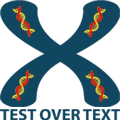Progressive Elaboration vs. Level of Granularity: Two Sides of the Same Coin

In the world of project management and business analysis, some of the most powerful concepts don’t stand in isolation—they complement one another. Two such concepts are Progressive Elaboration from the PMBOK® Guide (PMI) and Level of Granularity from the BABOK® Guide (IIBA). While they originate from different frameworks, they share a common purpose: guiding clarity, precision, and alignment in projects.
What is Progressive Elaboration?
According to PMI, Progressive Elaboration is the iterative process of refining project details as understanding deepens. At the beginning, project plans often start at a high level, but as the team gathers more information, scope, timelines, and deliverables become increasingly detailed.
What is Level of Granularity?
From a business analysis perspective, Level of Granularity refers to the degree of detail captured in requirements, models, or documentation. Too little detail may lead to ambiguity, while too much can overwhelm stakeholders. The goal is to strike the right balance based on project needs.
How They Work Together
Though defined separately, these two concepts are closely connected in practice:
- In Agile: Progressive elaboration guides backlog refinement, while granularity determines whether items are epics, features, or user stories.
- In Traditional Project Management: High-level milestones (low granularity) are broken down over time into tasks and activities (high granularity).
Why It Matters
Mastering both approaches is critical for project success. Progressive elaboration ensures plans evolve with new insights, while managing granularity ensures the right level of detail is applied at the right time. Together, they form a practical strategy for reducing risk, improving stakeholder alignment, and delivering better outcomes.
The next time you refine a plan or dissect a requirement, ask yourself: Am I elaborating progressively? Am I applying the right level of granularity? The synergy between these two might just be your hidden advantage in achieving excellence.

Other Business Analysis Articles:

